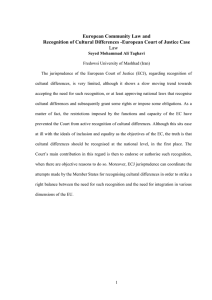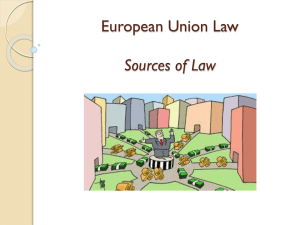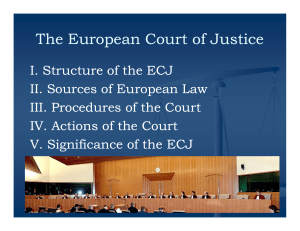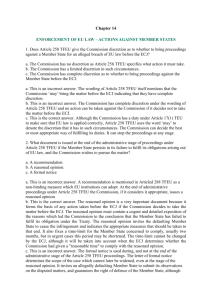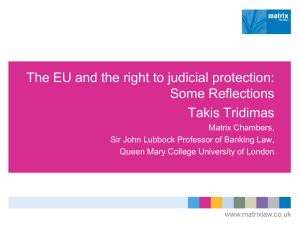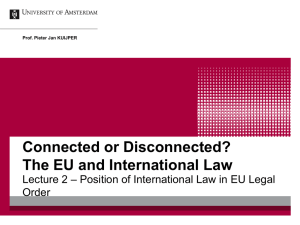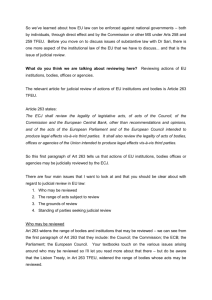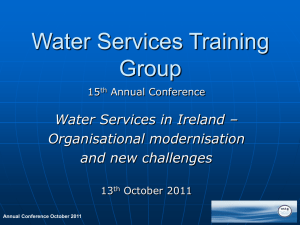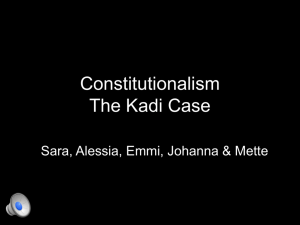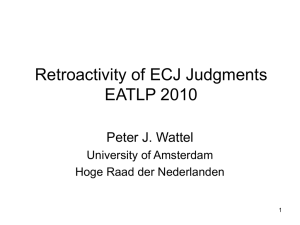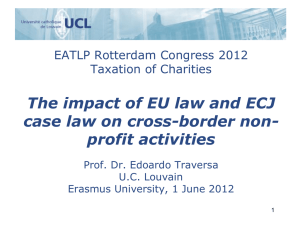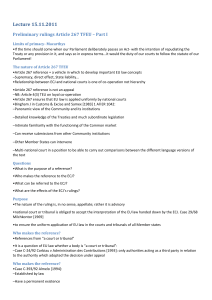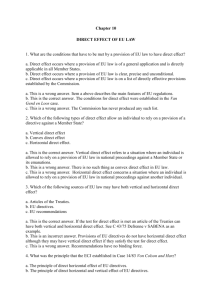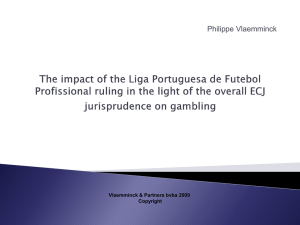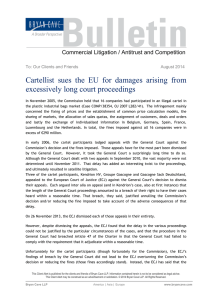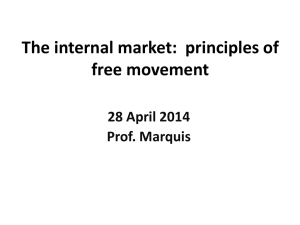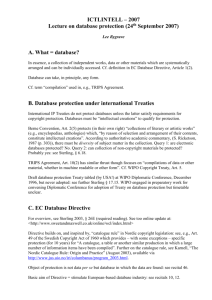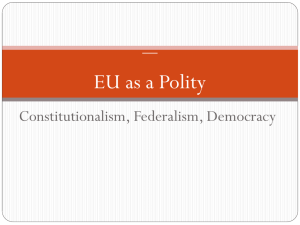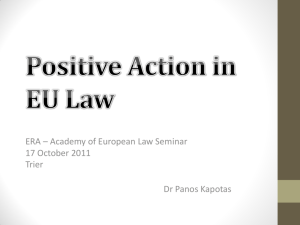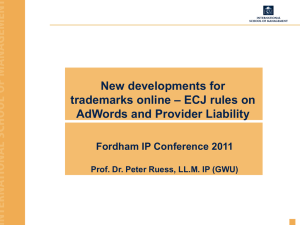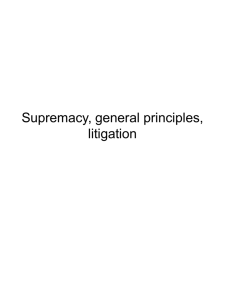Chapter 3 THE INSTITUTIONAL FRAMEWORK OF THE EU 1. Which
advertisement
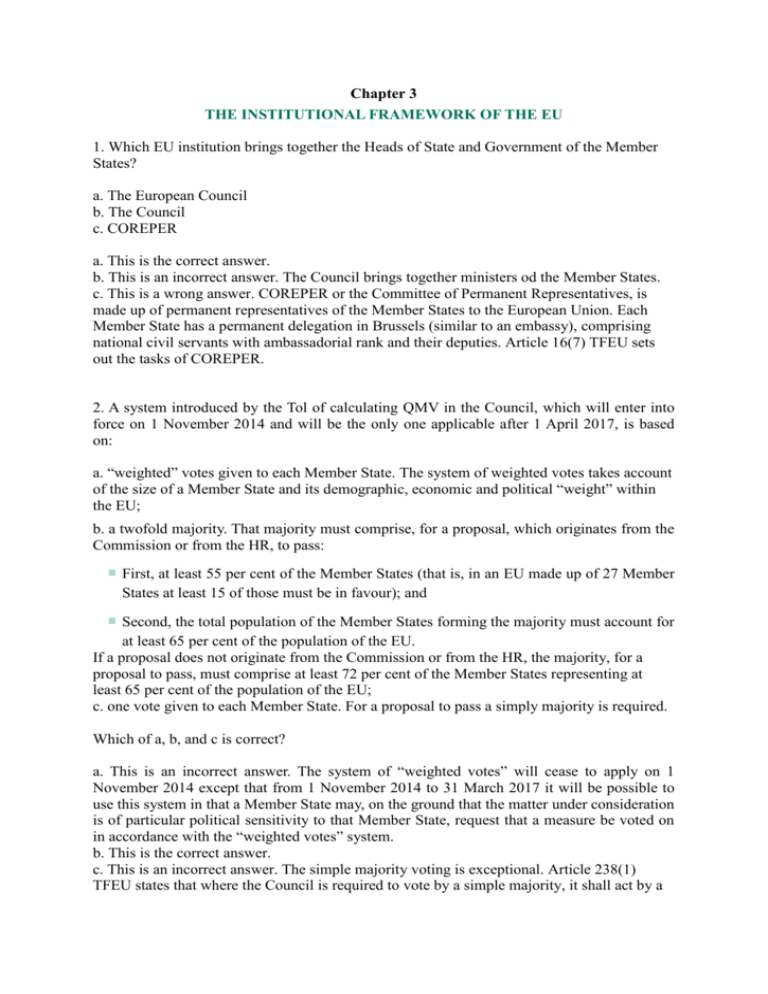
Chapter 3 THE INSTITUTIONAL FRAMEWORK OF THE EU 1. Which EU institution brings together the Heads of State and Government of the Member States? a. The European Council b. The Council c. COREPER a. This is the correct answer. b. This is an incorrect answer. The Council brings together ministers od the Member States. c. This is a wrong answer. COREPER or the Committee of Permanent Representatives, is made up of permanent representatives of the Member States to the European Union. Each Member State has a permanent delegation in Brussels (similar to an embassy), comprising national civil servants with ambassadorial rank and their deputies. Article 16(7) TFEU sets out the tasks of COREPER. 2. A system introduced by the Tol of calculating QMV in the Council, which will enter into force on 1 November 2014 and will be the only one applicable after 1 April 2017, is based on: a. “weighted” votes given to each Member State. The system of weighted votes takes account of the size of a Member State and its demographic, economic and political “weight” within the EU; b. a twofold majority. That majority must comprise, for a proposal, which originates from the Commission or from the HR, to pass: ■ First, at least 55 per cent of the Member States (that is, in an EU made up of 27 Member States at least 15 of those must be in favour); and ■ Second, the total population of the Member States forming the majority must account for at least 65 per cent of the population of the EU. If a proposal does not originate from the Commission or from the HR, the majority, for a proposal to pass, must comprise at least 72 per cent of the Member States representing at least 65 per cent of the population of the EU; c. one vote given to each Member State. For a proposal to pass a simply majority is required. Which of a, b, and c is correct? a. This is an incorrect answer. The system of “weighted votes” will cease to apply on 1 November 2014 except that from 1 November 2014 to 31 March 2017 it will be possible to use this system in that a Member State may, on the ground that the matter under consideration is of particular political sensitivity to that Member State, request that a measure be voted on in accordance with the “weighted votes” system. b. This is the correct answer. c. This is an incorrect answer. The simple majority voting is exceptional. Article 238(1) TFEU states that where the Council is required to vote by a simple majority, it shall act by a majority of its component members. The Council votes by simple majority mainly in respect of procedural matters including the adoption of its Rules of Procedure. 3. Which of the EU institutions is known as the Guardian of the Treaties? a. The Council b. The ECJ c. The Commission a. This is an incorrect answer. The Council represents the interests of the Member States although it is also an EU institution. b. This is an incorrect answer. The ECJ is not seen as the Guardian of the Treaty. c. This is the correct answer. The Commission ensures that the provisions of the Treaties and the acts of the institutions are complied with by the Member States, by any natural or legal person under the jurisdiction of a Member State and by all EU institutions, bodies, offices and agencies. The competences given to the Commission under Article 17(1) TFEU and the powers associated with the enforcement of EU law under Article 258 TFEU clearly show the link between the Treaties and the responsibilities of the Commission. 4. When were the first direct elections for the European Parliament? a. in 1957 b. in 1979 c. in 2001 a. This is a wrong answer. b. This is the correct answer. The first direct elections were held in 1979 and direct elections have taken place every five years since then c. This is a wrong answer. 5. What is the role of the Advocate-General in the ECJ? a. To write judgments of the ECJ. b. To provide general advice on EU law to the parties to the proceedings before the ECJ. c. To analyse the relevant law and facts and provide an opinion to the ECJ suggesting a solution to the case. a. This is a wrong answer. The ECJ writes its judgments. Usually a judgment is drafted by the judge rapporteur who has to get the approval of all the other judges hearing the case so that there is one judgement presenting the decision of the ECJ. b. This is a wrong answer. c. This is the correct answer. The Advocate-General is of the same standing as a judge and is a member of the Court. He hears all the evidence that is presented to the judges and then provides a suggested outcome in the form of his Opinion.
